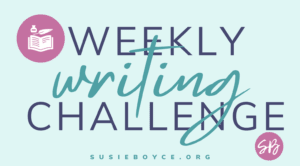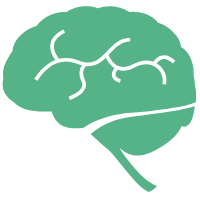Anatomy of a Traumatic brain injury:
Why So Much Fatigue and Brain Fog?
2020

Susie Boyce, Utah
Wednesday, March 18th
Being hit by a car also left me with vertigo and dizziness. That eventually dissipated, but my cognition remained remarkably untrustworthy. My neck and right shoulder muscles — having been slammed onto the parking lot pavement — had basically “frozen” and showed no signs of wanting to budge.
My non-driving status meant accepting help in almost every form, including rides for me (to doctor appointments), rides for my five kids (then ages 7-17, to oh so many places), groceries purchased and delivered and put away, laundry, house cleaning and meals.
Whenever friends or family would arrive to help, my automatic response was to want to get up and pitch in — or at least chat while they were doing otherwise mundane tasks. But my brain literally didn’t have the capacity or energy. I would need to sit or lay down minutes (sometimes seconds) after standing up and was rarely able to stay awake through the end of the visits. I have several fuzzy memories of a blanket being draped over me followed by the sound of the front door closing.
I have several fuzzy memories of a blanket being draped over me followed by
the sound of the front door closing
As exhausting and frustrating as those weeks were, I figured I could hold on until my recovery was over. The doctors at the hospital and a neurologist (two weeks after the accident, when I had gone in feeling worse instead of better) had all told me to take it easy and let my brain rest for about six weeks, after which I should be back to normal.
Six weeks came and went. And then several more.
Although I didn’t feel recovered, per say, I had some hope when I was able to do some “normal” activities — like drive, and shop … anywhere but Walmart (the scene of the accident). I even began to attend some school and church events.
People would comment that I looked great and seemed to be recovering remarkably well. There was some truth to that, and I genuinely appreciated their concern and kindness. But few knew — and even fewer understood — what it took for me to just show up.
Every morning, with the help of my husband’s non-diminished brain power, I would plan my day around one thing: sleep. If someone was bringing lunch, I took a two-hour nap before noon. In preparation for my kids getting home from school, I took another two-hour nap. If an evening event was important enough for me to attend, I slept for an hour before dinner.
Even with all that preparation, it wasn’t uncommon for me, when out in public, to turn to the nearest person and say, “My brain is shutting down. Can you help me get to (fill in the nearest place to rest) before I fall asleep?”
On the rosy side, my narcolepsy made for some great stories. Over the next few years, I fell asleep in cars (basically every time I rode in them), at friends’ homes, in church (OK, not so unusual, but my head ending up in a friend’s lap due to a sudden onset of fatigue was a bit extreme), at restaurants, during action-packed movies, and, of all places, on a cold wooden bench at the Tower of London (I couldn’t make that one up, folks).
So, my six weeks of recovery stretched into years.
Because my expectation had been a full recovery after six weeks, I found myself routinely blindsided by my recurring symptoms. After a few good days or weeks, I’d suddenly come crashing down — often feeling worse than I had previously. It felt like I was taking one step forward, five steps back.
routinely blindsided
by my recurring symptoms
But few knew — and even fewer understood —
what it took for me to just show up
About a year after my accident, I finally met a doctor who was able to explain the mechanics of what had happened to my brain upon impact and why I was still symptomatic. For the first time since my injury, I felt understood. Most importantly, I was incredibly relieved to know that I hadn’t completely lost my mind.
My husband’s dedication to me and our family during those years was remarkable. I can only imagine how difficult it was for Jeff to “lose” his wife on so many levels, but he never complained. Because I know how difficult it was for Jeff and other close family and friends to comprehend what I was going through, I went on to learn as much as I could about brain injuries. Filling in our knowledge gaps has been incredibly helpful for us.
For the first time since my injury, I felt understood. Most importantly, I was incredibly relieved to know that I hadn’t completely lost my mind.
It would have been great for us to have been told these basic facts about concussions (mild traumatic brain injuries) from the onset:
- A concussion may or may not show up on a diagnostic imaging test, such as a CAT scan.</span
- A concussion can cause injury resulting in permanent or temporary damage.<span
- It may take a few months to a few years for a concussion to heal.
Additionally, in his article, “What Happens in the Brain During and After a Concussion?”, David Menon, head of the Division of Anaesthesia at the University of Cambridge Department of Medicine, tells us when a concussion happens, the brain “is pushed against the inside of the skull and can be bruised.” Some nerve fibers can recover from the injury, he writes; others can’t.
Recovering from these injuries is an “energy-intensive process,” Menon says. While symptoms — such as headaches, dizziness and fatigue — usually clear up within a few weeks, “they can last longer and can be responsible for prolonged changes in cognitive function,” he says.
Neuroplasticity, the brain’s ability to regenerate damaged neural connections, is a remarkable process that can also be remarkably slow.
Finding answers to the fatigue that plagued me for years was important, so I especially appreciate the explanations given by Birgitta Johannson and Lars Ronnbock in their article, ”Long-Lasting Mental Fatigue After Traumatic Brain Injury.”
Johannson and Ronnbock point out that fatigue after a brain injury is common but often overlooked and urge that all TBIs be taken very seriously. They quote therapist Luann Jacobs:“Mild brain injury is a real misnomer, as it conveys the idea that nothing much is a problem when quite the opposite is more often true. It is called ‘mild’ because, in fact, the mildly injured brain can walk, talk, eat and dress independently, often times drive a car, shop, cook, go to school, or even work.
“What the term fails to account for is the inherent limits of how often, for how long (endurance), and the all-important, how consistently (e.g., every day, once a week) these activities can be performed. Even more elusive is the concept of how many of these daily activities can be done sequentially in a given day as is normal in the lives of people who are not brain injured.
“The fatigue they feel defies description, going far beyond and far deeper than anything a non-brain-injured person would consider profound exhaustion.”
ChAllenge
So to everyone affected by TBIs, please remember that chronic mental fatigue — along with its formidable list of symptoms — is often a dominating factor during brain injury recovery. The better we understand this, the less likely we are to misunderstand others.
In my conversations with doctors and other TBI survivors during the seven years since my accident, I’ve learned that my still being symptomatic — albeit much better than even last year — is not uncommon, especially among adult TBI survivors. Neuroplasticity, the brain’s ability to regenerate damaged neural connections, is a remarkable process that can also be remarkably slow.
So, my challenge to those with TBIs and their caregivers is to be gentle and patient with yourselves and your loved ones. The road to recovery can be long and bumpy and full of detours; but with the right traveling companions, the journey is manageable. And sometimes even comical. On the evening I had fallen asleep in a lap at church, a dear friend showed up at my door, dinner in hand. “Someday we’ll laugh about this,” she said, hugging me, “But for tonight, here’s dinner.”
I’m lucky to have traveling companions who laugh and cry with me. Let’s all aim to be the best of versions of ourselves during our respective journeys.
Published in KSL.com – HERE’s the link
What’s Next
Next article:
Traumatic brain injuries: How to recognize and navigate post-concussion syndrome
Previous Article in TBI Series:
This is second in a series of articles wherein I discuss my traumatic brain injury (TBI) symptoms, the science and statistics behind brain injuries, and resources that have been helpful to me during my recovery.
Author’s Note:
Everything I discuss about traumatic brain injury (TBI) in this series of articles is mine and mine alone. Injury and recovery journeys are unique, making it impossible for anyone to walk the exact same path. But in the event that our paths are similar, perhaps even crossing each other’s on occasion, my goal in writing these articles is to lend perspective and hope to fellow travelers.
Susie Boyce










